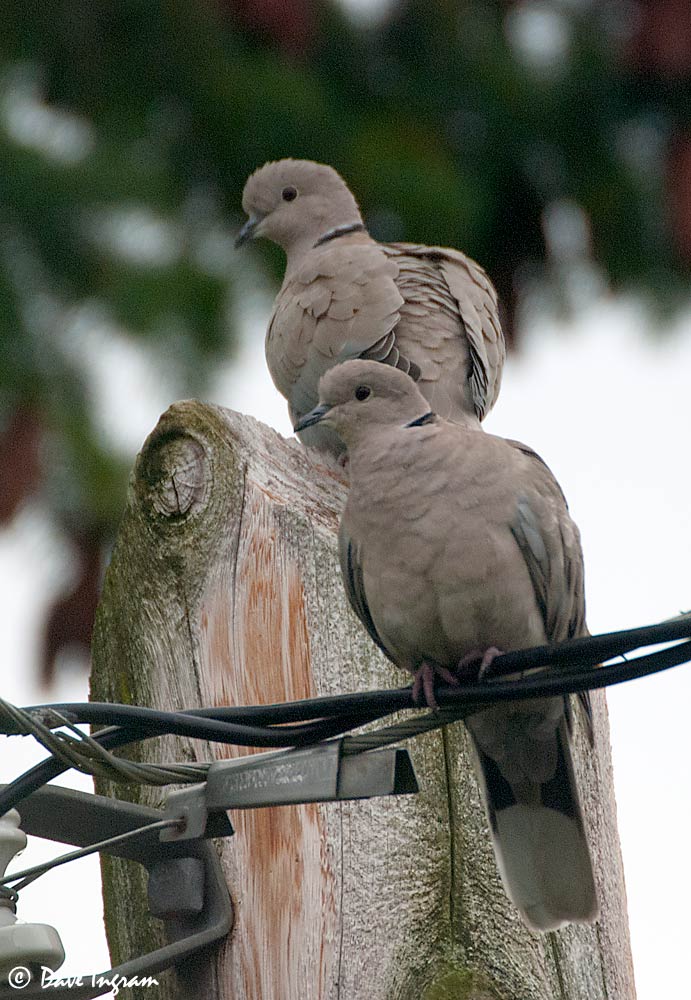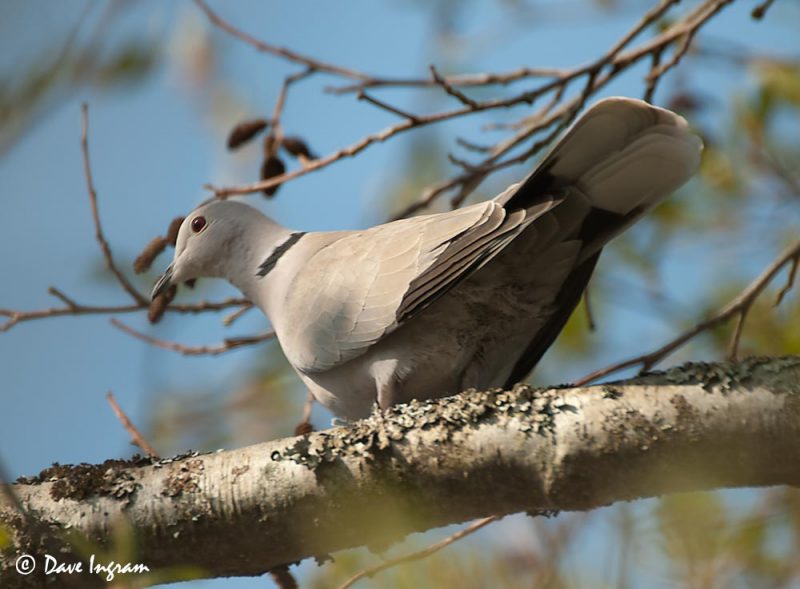Last weekend when I spent a day birding and looking for salmon I checked out the small park at the end of Deep Bay Drive for waterfowl. The park is an excellent place to look for waterbirds and often they come in quite close to the shore looking for shellfish. While I had good looks at the ducks there wasn’t really anything unusual on the water and my old Sigma was doing its usual poor job of pulling in the birds close enough to produce decent photographs.
What was interesting was a flock of close to 20 Eurasian Collared-Doves (Streptopelia decaocto) feeding on the ground amongst the houses on Deep Bay Drive.

Over the last 5 years or so these doves have become more and more common here on the west coast of Canada. Originally introduced from Asia to the Bahamas in the 1970s the birds made their way to Florida by the 1980s and have been moving further and further into other parts of North America ever since. I’ve seen them in Ucluelet while working for the summer with Parks Canada at Pacific Rim National Park Reserve and there are several “resident” birds in our neighbourhood in downtown Courtenay.

In comparison to other doves, the Eurasian Collared-Dove can be separated from the native Mourning Dove (Zenaida macroura) based on its larger size, grey colouration, broad white patches on the tail, and the namesake black collar. Compare these photos with a Mourning Dove that hung out in our backyard in Courtenay for a while in the winter of 2009.
The Collared-Dove looks a little like the African Collared-Dove/Ringed Turtle-Dove (Streptopelia roseogrisea) but is darker on the back and wing tips and has grey undertail coverts. Unless it is a local escapee, your collared dove is likely to be a Eurasian.
A little further south I saw a second smaller flock of Eurasian Collared-Doves in another subdivision. This bird definitely seems to do well in suburban areas with established bird feeders and doesn’t seem to be negatively impacting other bird populations. Keep and eye out for this species on the upcoming Christmas Bird Counts!